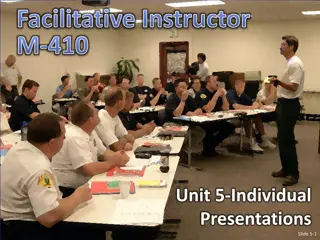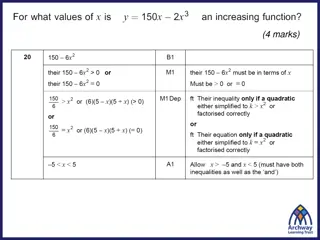Key Points for Effective Presentations
Create impactful presentations by using light text on dark backgrounds, simple graphics, and concise content. Prioritize key points, simplify graphics, and stay within recommended slide limits to engage and respect your audience.
Download Presentation

Please find below an Image/Link to download the presentation.
The content on the website is provided AS IS for your information and personal use only. It may not be sold, licensed, or shared on other websites without obtaining consent from the author.If you encounter any issues during the download, it is possible that the publisher has removed the file from their server.
You are allowed to download the files provided on this website for personal or commercial use, subject to the condition that they are used lawfully. All files are the property of their respective owners.
The content on the website is provided AS IS for your information and personal use only. It may not be sold, licensed, or shared on other websites without obtaining consent from the author.
E N D
Presentation Transcript
Markov Chains Part 4
The Story so far Def: Markov Chain: collection of states together with a matrix of probabilities called transition matrix (pij) where pijindicates the probability of switching from state Sito state sj Theorem 1: The pijentry of Pnshows the prob of moving from state sito state sjin n steps Theorem 2: If u is a vector of starting probabilities, then the probability of being in state sjafter n steps is u(n)= u Pn
The Story so far (2) Def: A state sjof a Markov chain is called absorbing if you cannot leave it, i.e. pii= 1. A Markiv chain is absorbing if it has at least one absorbing state and it is possible to reach that absorbing state from any other state. In an absorbing Markov chain the state that is not absorbing is called transient. Note: The canonical form of a transition matrix of an absorbing Markov chain has the form Q R 0 Id Theorem 3: In an absorbing Marko chain the probability of a process being absorbed is 1, i.e Qn 0
The Story so far (3) Theorem 4:For an absorbing Markov chain P, the matrix N = (I Q) 1 is called the fundamental matrix for P. The entry nijof N gives the expected number of times that the process is in the transient state sjif it started in the transient state si Example: Find the expected number of times in states 1, 2, and 3 before being absorbed in our drunkard s walk with 4 corners.
Are we there yet ? Theorem 5 (Time to Absorption): Let tibe the expected number of steps before the chain is absorbed, given that the chain starts in state si, and let t be the column vector whose ith entry is ti. Then t = Nc where c is a column vector all of whose entries are 1. Example: Find the time to absorption in our drunkard s walk.
Are we there yet (2) Theorem 6: Let bijbe the probability that an absorbing chain will be absorbed in the absorbing state sjif it starts in the transient state si. Let B be the matrix with entries bij. Then B is an t-by-r matrix, and B = NR , where N is the fundamental matrix and R is as in the canonical form. Example: Find and interpet the matrix B or ou drunkard s walk.
Summary The properties of an absorbing Markov chain are described by the transition matrix P as well the matrices Q, R, N, t, and B. Example: Find Q, R, N, t, and B for the pizza delivery Markov chain.
Ergodic Markov Chains Definition: A Markov chain is called ergodic if it is possible to go from every state to every state (not necessarily in one move). In many books, ergodic Markov chains are called irreducible. A Markov chain is called regular if some power of the transition matrix has only positive elements. In other words, for some n, it is possible to go from any state to any state in exactly n steps. Is every regular chain ergodic? Is every ergodic chain regular? Is an absorbing chain regular or ergodic?
Ergodic does not imply Regular Example: Consider the transition matrix P = 0 1 0. This Markov chain is ergodic but not regular. 1 How about the Ehrenfest urn model, whose transition matrix is: 0 1 0 0 0 0 0 0 0 1/4 0 0 0 3/4 0 3/4 0 1/2 0 0 1/2 0 1 1/4 0 How about if you change any zero in the above matrix to a non-zero entry? For that matrix, compute P^n as n goes to infinity. This is no accident, as the next theorem shows.























